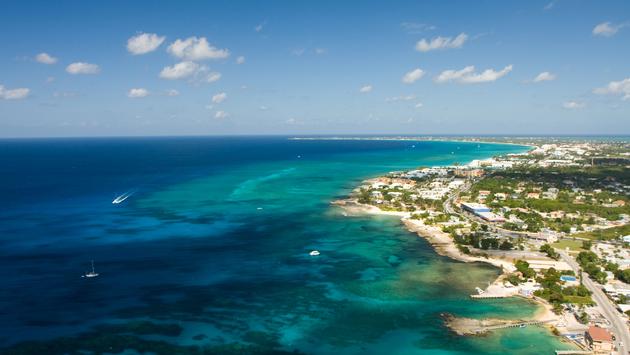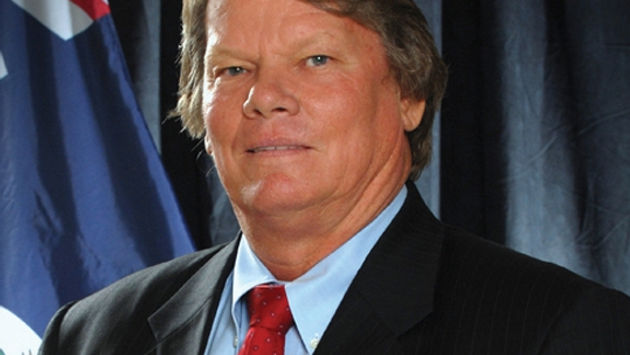COVID-19 Border opening delay buoys Cayman Islands
By Brian Major from Travel Pulse

Although it has the same motivations as other tourism-reliant Caribbean destinations to balance public health with the need to resume critical tourism activity, the Cayman Islands has held off on re-opening its borders.
The territory has remained closed to visitors as other popular Caribbean destinations have resumed tourism activity amidst significant COVID-19 protocols. It appears to have paid off for the country as the Cayman Islands is one of the few countries in the world to record zero coronavirus cases. [On August 19 Cayman’s chief medical officer confirmed two positive cases of COVID-19, identified as travelers arriving on separate flights].
We spoke recently with Moses Kirkconnell, the Cayman Islands’ longtime tourism minister and deputy premier, to hear the government’s approach to managing health in the territory and reopening the country to all-important tourism.


TP: How has the Cayman Islands been able to successfully battle the pandemic?
MK: We are COVID free. We’re very proud of that. We haven’t made the announcement of when all of the travel restrictions will be lifted [but] we’ve had 26 or 27 days of negative tests among frontline workers. Over 50 percent of the country has been tested and I think we are number three in the world as far as percentage of tests, which is certainly very helpful.
TP: What will be the entry process for international visitors?
MK: We have and are going to look at what other small-island nations in the region, our friends and partners, have done. We’re taking note of their successes, and we’ve looked at some that have had to shut down again [and] close their borders for a second or third time, and the reasons those happened. So we will have a very rigorous program of repatriation and how we open to tourism. We want to use all the different methods that have been made available.
For [travelers] to come here, you’d have to produce a negative COVID-19 PCR test and fill out a health form. You would be given a health monitor that records your respiratory [function], your heart rate you’re your temperature, and we also have a monitor which geo-fences for isolation.
So when you come to the island, we will monitor your health on a daily, hourly basis. The [monitor] will show changes before you actually have a COVID issue. Then after five days in isolation, you will take another test and after you test negative, you are released from isolation and are free to enjoy the rest of the island.
TP: Are you concerned the restrictions will limit the number of willing to take a vacation under those conditions?
MK: We’re very understanding we’re not going to return to 500,000 tourists a year if they have to quarantine for five days to14 days. The reason we [are] doing a phased opening is we have a lot of friends and family, a lot of property owners, and people on work permits that need to repatriate.
So during the month of September, we’ll be doing repatriation flights on the national carrier. Thousands of people have left the island to return home because of their permit situation. We want to move in a very guarded way that after, we hope, the five-day isolation program proves to be a success, our next phase would be moving to the technology that actually gives indication of COVID, so you wouldn’t have to quarantine.
TP: How does a tourism-reliant Caribbean destination like the Cayman Islands respond to a situation where there is zero tourism?
MK: 2019 was the best [tourism] year in the history of this country and 2020 was shaping up to be better than the year before. So we are very confident in our marketing, branding and strategy as a tourism destination. We understand any time you have a world event like a pandemic it’s going to take a while to recover. Our tourism product was 20 to 25 percent of our GDP.
So we are having to lean on reserves. We have and the other pillars of our economy, which are finance and construction, to keep our domestic economy going. [But] for us to go back to a successful economy, we obviously have to introduce tourism in the right way. So we have talked to our tourism operators, and we have put in place educational opportunities to re-skill workers for other parts of the economy.


TP: How has the tourism shutdown affected the local economy?
MK: The biggest hit for us was our cruise because we did two million in cruise last year. We’re working to re-skill cruise industry workers and look for opportunities in the stayover industry. A taxi driver or tour operator is an ambassador for your country so with a little bit of help they could fit in as a marvelous concierge for a property.
We’re putting those parts in place where they are available. We’re trying to get a percentage of our tourism back for the third and fourth quarter this year, and show some optimism, and let they see there’s going to be a new normal and we’re going to work through this.
TP: Has the pandemic illustrated the crucial nature of cruise tourism to the Cayman economy?
MK: “It’s extremely important because it balanced our economy. Thousands of unemployed tourism workers have registered with us and we’re to helping them manage their financial issues. That’s why it’s important for us to re-skill them and to help them take advantage of other parts of the economy.”
TP: What makes you confident about the future for tourism to the destination?
MK: We will get back our way of marketing, branding and doing business. We want to make it easy for people to travel here and have a gateway they can feel confident in. We believe it’s worth the wait for [visitors] to come into a COVID-free bubble, a fantastic destination with the best beach in the world that is the culinary capital of the Caribbean. Most importantly we want that when you make the decision to come to Cayman it’s because it’s safe, COVID is under control, and I can enjoy my time with my family in a beautiful place.
For more on this story go to: TRAVEL PULSE





